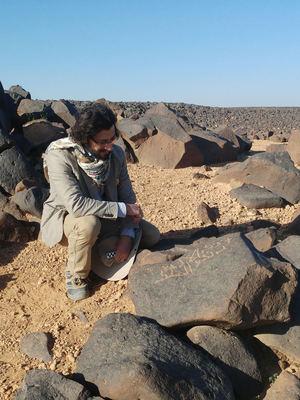- Local News
- Sun-2021-02-21 | 05:01 pm

Recent discoveries in the Black Desert in eastern Jordan offered a glimpse into the religious practices in ancient times, according to a Jordanian historian.
Speaking during a recent webinar organised by the American Centre of Research in Amman, Ahmad Al Jallad, professor of philology at Ohio State University, said that human habitation in the Black Desert stretches from the Prehistoric Period to the modern times.
During a two-week survey in June of 2019, Jallad and his team discovered a site with hundreds of scripts in Safaitic and Greek, he said.
"One of the most remarkable features of the Black Desert are its inscriptions,” Jallad said, adding that petroglyphs (images of animals and humans) are also found in the area, and these scripts give an insight about the inhabitants of the desert.
Moreover, the most numerous scripts in the Black Desert are written in Safaitic script (an extinct indigenous script of Arabia), he said, adding that they mention personal names, religious customs, buildings and funerary rites.
"A conventional belief among scholars is that the practice of inscription began around the 3rd century BC and ended around the 4th century AD,” Jallad said.
The scholar also noted the presence of inscriptions that deal with a northern Arabian custom of "stopping and weeping”.
"Old bards would start their poems by stopping and weeping at the camp sites remembering their loved ones,” he said, noting that many of these inscriptions give scholars information about religious life, deities and animal sacrifice.








